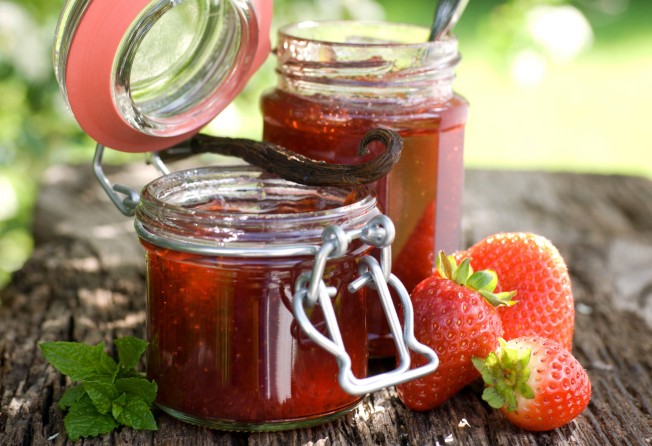
The secret to perfect preserves and pickles? Fresh produce, according to cookbook
- Perfect Preserves by Nora Carey includes recipes for pickles, jams, jellies, deep-freezing and drying
- The American author highlights the need to use recently picked produce, as well as how to forage

Being forced to stay at home, many of us are dreaming of having a kitchen garden from which to harvest fruit and vegetables. In Perfect Preserves: Provisions from the Kitchen Garden (1990), with its photographs of vast, beautiful, perfectly tended country gardens and white tile-lined pantries crowded neatly with whimsically labelled jars of home-made jams and jellies, it’s as if our dreams have come to life.
You can always source produce at the market, of course, but as American author Nora Carey says in the introduction to her cookbook, whatever you preserve should be super fresh.
“No matter where you live, the fundamental rules of preserving should be defined by the quality and seasonal availability of the raw materials. Despite the wide use of air-freighting and exchange of fresh produce between countries, preserving should be about treating locally grown produce.
“Preserves made with produce within hours of being picked off the vine or unearthed from the soil will always be superior to those made with tired fruits and vegetables. Always remember that preserving does not improve the basic quality of raw goods; it only maintains it.”
Carey details how to select seeds, bushes and trees for our own kitchen gardens, and if that isn’t possible, how to forage.

Preserving isn’t limited to jams and jellies. There are many ways of preventing foods from going bad. Carey writes, “Technically, the object of preserving is to slow down the process of decay. Food spoils from the continued activity of natural enzymes in all fruits and vegetables and the continued work of microorganisms in the form of moulds, yeasts, and bacteria present in the food and the air.
“There are many ways to delay the deterioration of food, among which are bottling, salting and pickling, sweetening, dousing in alcohol, deep-freezing and drying. The resulting preserves should be valued on their own merit and not in comparison to the raw form.”
Carey covers all these techniques. There are recipes for sweet and savoury fruit preserves, including blueberry jam, cherries in almond syrup, kumquats in brandy syrup, mango chutney, chunky vanilla pear jam, and modern mincemeat. Recipes to preserve vegetables include wild mushrooms in oil, pumpkin purée, red pepper sauce, dried forest mushrooms, pickled pink onions, dried corn, carrot jam, and marinated artichokes in olive oil.
She also gives recipes that use home-made preserves: grilled mackerel with gooseberries, chestnut bread pudding, blackberry jam picnic cake, apple butter and apple tart, duck ragout with blackcurrant pears, and chicken and plum chutney kebabs.